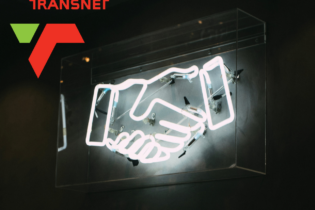If the past were to repeat itself, supply chains of the future will evolve in line with the global trends that are fuelling the economy and transforming society and culture. By David Telford.
Often described as the heart and lungs of any organisation, the supply chain, more than any other business function, is not only sensitive to the pressures from these global trends, but is also required to be the first that has to respond to them. Said demands, and the unabated business requirements to cut costs, improve efficiency, and boost performance, leave supply chain executives between a rock and a hard place. How do they innovate to keep pace with global trends whilst driving efficiency and meeting customer demands? Six developing trends supply chain executives need to keep track of. Let’s start by exploring the triggers for supply chain evolution and the trends that supply chain executives need to keep track of. Today we see six developing trends that are affecting the way organisations do business. They will dictate the future macroeconomic environment, with each trend having a direct impact on how organisations structure and operate their supply chains: 1. Globalisation: The onset of globalisation has made the supply chain much more complex to manage – as complexity increases so too do risk and cost. Natural disasters that have occurred in Thailand and Japan in recent years have emphasised the need for effective risk management in the supply chain in order to reduce disruptions and address outages quickly. As more manufacturing work is outsourced to suppliers around the world, it will become far more difficult to supervise and track production. 2. The rise of the consumer: The interaction between companies and their consumers has evolved considerably in the last 10 years. New technologies, in particular, social media, mobile and cloud-based applications, have empowered customers and consumers and offered new, direct access to brands. With this and consumer-led mass customisation of products, there is an even greater need to understand and anticipate customer requirements. Once captured, they can be fed into future product development, supply chain planning and demand management. 3. Sustainability and climate change: Climate change is rising up the global political, corporate and consumer agenda. There is increased regulation, a greater focus on corporate and social responsibility, and demand from consumers for high environmental standards. These forces have an impact on supply chains in multiple ways. Most of the social and environmental impact made by companies around the world happens in the supply chain where shipments are dispatched, materials consumed and labour employed. Accountability for a company’s sustainability performance will fall almost entirely on the supply chain. To ensure long-term success, supply chain leaders must own sustainability. 4. Technology convergence: Technology that enhances information processing and decision making, such as the combined power of data analytics and the Internet of Things (IoT), allows organisations to gain deeper insights into trends, consumer behaviours and process efficiency. Collating both unstructured and disparate data sets together, from consumer sentiment on social media to machine-to-machine data, provides new frontiers in supply chain transparency and process automation. However, the dependency on data sources of this kind does necessitate careful integration of systems, new and old, to deliver true end-to-end supply chain visibility. 5. Regulation: Linked to the growing complexity of global markets and the importance of security, global and local policy makers are imposing far stricter regulations on companies. With more rules and regulations continually being introduced, organisations have to be prepared to divulge information about sourcing and supply chain practices. If non-compliant, they can expect to be handed expensive penalties and expose themselves to other legal risks. Technology has a big part to play here, as it can provide the visibility required to ensure full compliance across the chain.6. The commercial supply chain: In an era of tighter credit and economic uncertainty, better working capital performance has become a top priority for many CFOs. The major levers, like finished goods inventory, raw materials inventory and accounts payable/receivable are all heavily influenced by supply chain decisions and activities. The pressure to deliver profitability requires the ability to measure the true cost to serve for each and every order, therefore, allows for better negation and value. For supply chain executives on the front line, however, it’s up to them to spot the early warning signs of supply-demand issues and how they will have an impact on profit and revenue targets for the company.
Shaping the future supply chain For most organisations, a number of these forces will collide at once and will consequently push business and supply chain leaders into action. Understanding the implications that these forces could have on the business before the impact will help supply chain executives exploit the opportunities that can be found and, more importantly, help maintain long-term competitiveness for the business. To help organisations shape their future supply chain around these trends and to balance the often conflicting priorities they face, I suggest focusing on: • Collaboration: Internal and external collaboration with customers and suppliers is imperative both to identify and efficiently fulfil demand. • Visibility: You need to be best in class to thrive in today’s challenging environment. Effective measurement of supply chain performance across the value chain is critical to achieving this. • Efficiency: Continue the drive to reduce supply chain costs to maximise profit and competitiveness – managing volatility and complexity. • Agility: Increased agility enables organisations to respond quickly to sudden changes in supply or demand. This means handling unexpected external disruptions smoothly and cost-efficiently, and recovering promptly from shocks such as natural disasters. The place between the rock and the hard place will always be challenging. It is, however, possible to carve out a successful supply chain future if these simple practices are applied.








